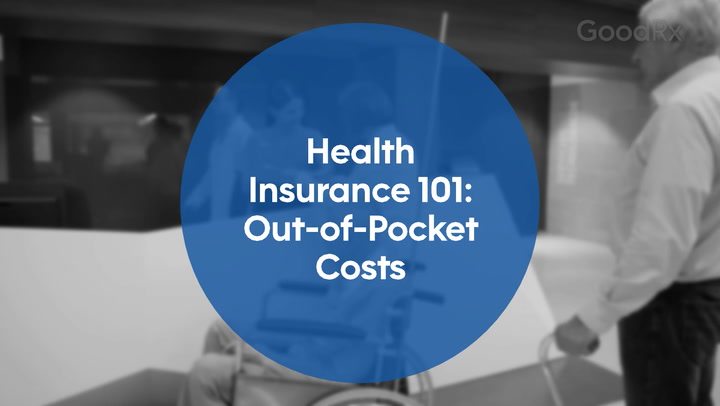
What Is COBRA Health Insurance? Learn the Basics of Employer Coverage After Job Loss
Key takeaways:
COBRA, or the Consolidated Omnibus Budget Reconciliation Act, is a federal law that protects workers and families from losing health coverage because of certain employment and family changes, such as quitting a job or divorcing the insured employee.
You and other people covered by your employer’s health plan may be able to continue with your health insurance under COBRA for 18 months or longer. But this option is often costly because you pay the whole premium — including the cost your former employer used to pay.
Your former employer must give you at least 60 days from the date of your “election notice” (which alerts you to your options under COBRA) or the date you would lose coverage, whichever is later, to enroll in COBRA.

Quitting a job or divorcing a person whose health insurance covered you can cause turmoil in your life. Fortunately, COBRA can help you keep your benefits.
This health insurance is named after the 1985 law that established the program: the Consolidated Omnibus Budget Reconciliation Act. COBRA protects employees and their covered dependents from losing their employer-based health insurance after certain job or family changes. Eligible people can keep their existing health coverage for 18 months (or more, in some cases).
Read on to learn more about how COBRA works, who is eligible, and why this insurance can be costly.
What is COBRA health insurance?
Your COBRA health insurance is identical to your employer insurance. “Having COBRA insurance” simply means that you and your covered family members are sticking with your employer’s group coverage after a qualifying life event.
Qualifying life events are life changes that could separate you or a family member from an employer’s group health plan, such as:
The insured employee’s departure from the job
The insured employee becoming eligible for Medicare
The insured employee’s divorce
The death of the insured employee whose policy covered their family
Prescription Savings Are Just the Beginning
See what other benefits you qualify for—from cashback cards to cheaper insurance.

The insured employee’s child turning 26 and aging out of family coverage
How does COBRA insurance work?
You can apply for COBRA if your former employer had more than 20 employees and provided your group medical insurance. COBRA coverage is not available to people who get their employer-based insurance through:
Companies with fewer than 20 employees
The federal government
Churches and related organizations
Insurance benefits under COBRA are the same as the ones that active employees receive. COBRA coverage has the same copays, deductibles, coverage limits, and rights to appeal in the case of a claim denial. If your health plan at your job included prescription drug coverage, vision care, and dental insurance, your COBRA will have all those benefits, too.
But the same coverage will cost you more because you’ll pay the entire premium: the share you had been paying, and the employer’s share as well.
How much is COBRA insurance?
COBRA premiums cost more even though you’re getting the same insurance coverage. That’s because you have to pay the entire premium yourself (rather than your former employer paying a share). In addition, a small administrative fee of up to 2% may apply.
(Some states, such as Florida, allow an even higher fee.)
Since this can be a heavy financial burden at a time of transition, it's important to weigh all of your other options for obtaining health coverage before signing up for COBRA.
During the COVID-19 pandemic, the federal government’s American Rescue Plan provided premium subsidies to help cover the cost of COBRA. This program ended in 2021.
Who is eligible for COBRA insurance?
You're eligible for COBRA coverage if:
You were enrolled in your job's health plan.
The workplace had at least 20 employees.
That health plan is still active.
A qualifying event caused you to lose coverage.
Your spouse, former spouses, and dependent children are also eligible for COBRA coverage.
How to enroll in COBRA health insurance
If you want to enroll in COBRA, you have to notify your health plan administrator within 60 days from the date of your “election notice” (which gives you your COBRA options) or from the date you would lose coverage. The plan administrator then must provide a notice of your COBRA rights to you and each covered member of your family. At that point, each adult in the family has 60 days to select or reject COBRA coverage.
Your COBRA notice will have critical information about rules and timelines, including:
How to enroll in COBRA
How soon you have to make your COBRA decision
How to notify the plan administrator that you want to enroll
The date COBRA coverage will begin
The maximum duration of coverage
Your monthly payment and its due date
Any retroactive premium payment that’s due
Situations where the coverage could be terminated early
When does COBRA coverage begin and how long does it last?
People are generally entitled to 18 months of federal COBRA continuation coverage after a layoff or a reduction of scheduled work hours. In certain circumstances, coverage for your spouse and dependent children can last up to 36 months. These extensions beyond the federal limit are known as “mini-COBRA” laws and exist in some states.
Your former employer must give you at least 60 days from the date of your “election notice” (which alerts you to your options under COBRA) or from the date you would lose coverage, whichever is later, to enroll in COBRA.
The coverage begins on the date of the job loss or other qualifying event. Even if you wait a while to enroll, coverage is retroactive to that date — once you’ve paid the premiums for that period. If you decide you want to cancel your COBRA coverage, you can do so at any time.
Should you choose a COBRA plan?
It depends on your needs. Here are some pros and cons of choosing COBRA.
Pros | Cons |
You keep your current health coverage. | COBRA is costly because you pay the entire premium — your part and your former employer’s portion. |
You know your current providers are covered by your insurance. | Other health insurance may provide the coverage you need and cost less. |
Coverage for dependents — children, spouses, former spouses — is not disrupted for at least 18 months. | If dependents don’t elect to continue with coverage by the deadline to continue — or can’t afford the premium — they could be left without health insurance. |
COBRA alternatives
Here are some other health insurance options you may choose instead of COBRA.
Medicare
If you're eligible for Medicare, you can enroll in Medicare after your group coverage ends during a special enrollment period.
Even with Medicare as an option, you may choose COBRA continuation coverage instead of Medicare. However, if you later decide to join Medicare Part B, you may end up with a late enrollment penalty on top of your Part B premium.
If you elect COBRA first, then enroll in Medicare Part A or B, your COBRA coverage may be terminated. However, it’s different if you're already in Medicare Part A or B and you then elect to sign up for COBRA. In that case, your COBRA coverage will stay in place alongside your Medicare plan.
If you have both Medicare and COBRA, Medicare will be your primary payer and COBRA will be your secondary payer.
Affordable Care Act marketplace plans
Even if you become eligible for COBRA, you don't have to use it for health insurance. You can look into whether an Affordable Care Act (ACA) plan from the health insurance marketplace is a more affordable option.
Job loss is a qualifying life event for ACA plan enrollment — even if you quit or get fired — and you’re eligible for a special enrollment period. You’ll be able to immediately enroll in a plan, without waiting for the open enrollment period in the fall.
You may find that ACA marketplace plans are more affordable than COBRA. You may also qualify for ACA premium subsidies to reduce your monthly cost for health insurance.
Additional resources
You can learn more about COBRA with these resources from the U.S. Department of Labor (DOL):
Call the DOL’s Employee Benefits Security Administration about COBRA at 1-866-444-3272
The bottom line
COBRA continuation coverage can help you hold on to your job-based health insurance after a change in job status or family circumstances. Coverage can continue for 18 months or longer depending on where you live.
But COBRA can be costly because you pay the full premium yourself plus an administrative surcharge. So, before signing up for COBRA, examine other insurance options. An Affordable Care Act plan may be much more compatible with your budget, especially if you qualify for premium subsidies that can reduce your monthly costs. If you qualify for Medicare, consider signing up.
Why trust our experts?


References
Benefits.gov. (n.d.). COBRA continuation coverage.
Centers for Medicare & Medicaid Services. (n.d.). COBRA continuation coverage questions and answers.
Centers for Medicare & Medicaid Services. (2020). FAQs about COBRA model notices.
Healthcare.gov. (n.d.). COBRA coverage and the marketplace.
Healthcare.gov. (n.d.). Special enrollment opportunities.
Medicare.gov. (n.d.). Avoid late enrollment penalties.
U.S. Department of Labor, Employee Benefits Security Administration. (n.d.). COBRA continuation coverage.
U.S. Department of Labor, Employee Benefits Security Administration. (n.d.). Continuation of health coverage (COBRA).
U.S. Department of Labor, Employee Benefits Security Administration. (n.d.). FAQs on COBRA continuation health coverage for workers.
U.S. Department of Labor, Employee Benefits Security Administration. (n.d.). Request assistance from a benefits advisor.
U.S. Department of Labor, Employee Benefits Security Administration. (2016). COBRA continuation coverage fact sheet.
U.S. Department of Labor, Employee Benefits Security Administration. (2018). FAQs on COBRA continuation health coverage for employers and advisers.
U.S. Department of Labor, Employee Benefits Security Administration. (2022). An employee’s guide to health benefits under COBRA.
























